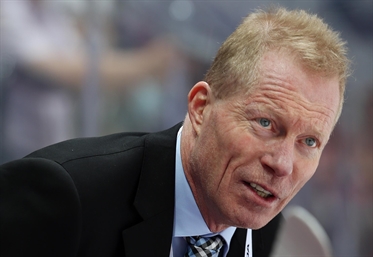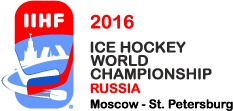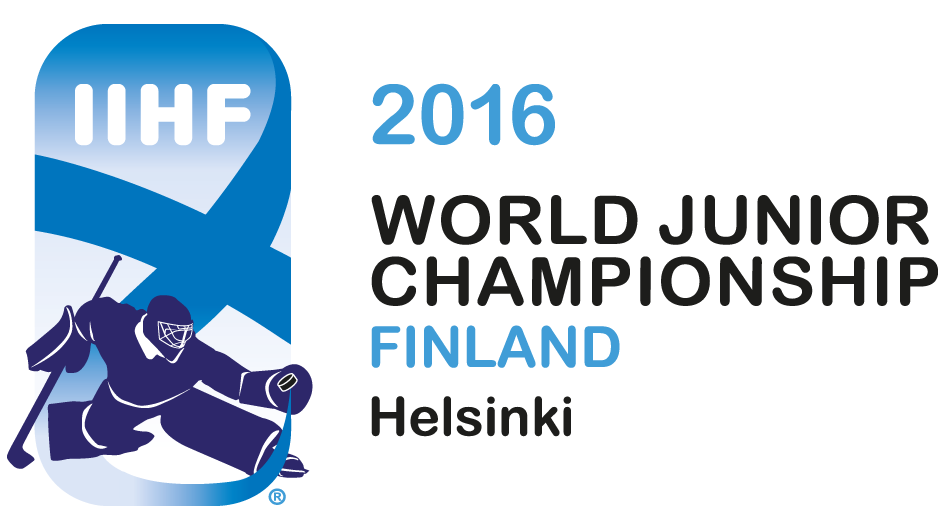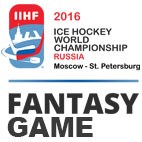The end of an era
The end of an era
Norway: 15 years with Johansen

 MOSCOW, RUSSIA - MAY 8: Norway vs Switzerland preliminary round 2016 IIHF Ice Hockey Championship. (Photo by Andre Ringuette/HHOF-IIHF Images)
MOSCOW, RUSSIA - MAY 8: Norway vs Switzerland preliminary round 2016 IIHF Ice Hockey Championship. (Photo by Andre Ringuette/HHOF-IIHF Images)
Nobody could accuse Norway’s hockey federation of seeking a quick fix – head coach Roy Johansen has been behind the bench for 15 years. In that time, he’s established the country as a top-division nation, delivering quarter-final finishes for the first time in modern history and reaching back-to-back Olympics.
But, as he prepares to say farewell to the international stage after the 2016 IIHF Ice Hockey World Championship, he warns that Norwegian hockey needs more investment to bring its hockey development programs in line with the success of the senior men’s team.
“I don’t think hockey in Norway has changed all that much over the last 15 years,” Johansen said in Moscow. “The biggest changes have been among the national team players. Now the players are serious athletes, they are more professional about the game, but at youth level we haven’t been able to change so much.
“We still need funds for education, to develop better teams and better programs for young players. And we still miss rinks to practise, we need more rinks and arenas to play hockey.”
The need is all the more pressing as the national team is on something of a high right now. With Mats Zuccarello and Andreas Martinsen playing in the NHL and others playing at a high level in Europe there’s a great opportunity to encourage more people into the game.
“Zuccarello and Martinsen are great role models and that helps young players to start in the game but we are still short of rinks and places to practise,” the coach added. “The biggest problem is that the government is not investing in more facilities. Hockey is strong in the eastern part of Norway but elsewhere there isn’t enough ice to practise. We need more money for youth development programs.
“There are a lot of young players coming through but I still think Norway’s big problem is that the under-18s and under-20s don’t play in the top division. If we want to be a top-division nation in the future we have to work harder with our youth, and get more players moving up into the senior team.”
While Norway’s small contingent of NHLers past and present tends to grab the headlines, Johansen speaks warmly of a group of veterans who have consistently answered the country’s call throughout his time in charge. The likes of Mats Trygg, Anders Bastiansen, Morten Ask and captain Ole-Kristian Tollefsen are all members of the 2005 roster who also played in Division I when Johansen first took charge of the Norwegian team.
“There have been so many players I’ve enjoyed working with, and even here in Moscow we have some guys who have been with me right the way through,” the coach added. “It makes a huge difference when you have a group of players who are always loyal to their national team, who want to come and play hard for their country every year. Even when there are injuries and other problems, they still want to play and that’s very important to keep Norway in the top flight.”
Perhaps the greatest measure of Johansen’s achievement behind the bench has been a change in the perception of Norway at World Championship level. He inherited a team in the second tier and steadily climbed the Division I rankings to win promotion in 2005. Norway has remained in the top pool ever since, reaching its first quarter-final of modern times in 2008 and today the pre-tournament discussion is usually about whether the team can crash the top eight rather than preserve its status.
This season, once again, the path to the QF is still open and a strong finish to the group stage could put Norway into the knock-out phase for the fourth time. That would be a fitting send-off for the coach.
But once the tournament is over, Johansen’s career continues. After defining Norway on the international hockey stage he’s going back to where it all began at Valerenga Oslo with a view to returning the capital city club to the top of Norway’s tree after the rise of Stavanger Oilers changed the landscape in the Nordic nation. Fittingly his successor will be Petter Thoresen, who led the Oilers to tremendous success.
League hockey, with its weekly round of games, presents a different challenge from international action, but Johansen doesn’t think it will be hard to adapt. The most difficult thing will be leaving behind the team – on and off the ice – that makes Norway the solid performer we are used to seeing today.
“It will be nice to go back to Valerenga,” Johansen added. “I’ve spent a lot of time on the national team and now it’s time to try to instil the right culture and make Valerenga the top team in Norway once again.”
After winning championships in Oslo back in the ‘90s and defining an era in his country’s international play, you wouldn’t bet against Johansen doing exactly that at Valerenga.
Back to Overview














































































